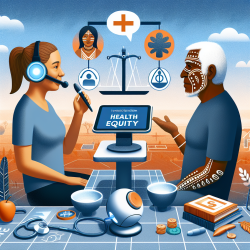Introduction
The World Trade Center Health Registry (WTCHR) was established in 2002 to monitor the health effects of the 9/11 disaster. This registry has become a crucial resource for understanding the long-term physical and mental health conditions resulting from the attacks. A recent study, "Scientific Value of the Sub-Cohort of Children in the World Trade Center Health Registry," offers valuable insights that can be applied to enhance educational and therapeutic practices.
Understanding the WTCHR Youth Cohort
The WTCHR youth cohort consists of children who were under 18 years old on September 11, 2001. This group is particularly significant because it provides a unique opportunity to study the long-term effects of disaster exposure on young individuals. The cohort includes 2,379 residents and 752 non-resident students who were in Lower Manhattan during the attacks.
Key Findings and Implications for Practitioners
The study found that the WTCHR youth cohort is representative of the population at risk in terms of age, sex, and, to some extent, income and race/ethnicity. This representativeness is crucial for ensuring that the findings can be generalized to the broader population of children exposed to the 9/11 disaster.
For practitioners, these findings highlight the importance of considering the unique needs of children exposed to traumatic events. By understanding the demographic composition and health outcomes of the WTCHR youth cohort, educators and therapists can tailor their approaches to better support these individuals.
Implementing Research Outcomes in Practice
Practitioners can leverage the insights from the WTCHR study to enhance their skills and improve outcomes for children exposed to trauma. Here are some practical steps to consider:
- Personalized Support: Use demographic data to tailor interventions that address the specific needs of different groups within the cohort, such as age, race, and income level.
- Long-term Monitoring: Implement ongoing assessments to track the progress of children over time, similar to the WTCHR's longitudinal approach.
- Community Engagement: Collaborate with local organizations and schools to create a supportive network for children and families affected by trauma.
- Research and Development: Encourage further research to explore additional factors influencing the health outcomes of children exposed to disasters.
Encouraging Further Research
The WTCHR study underscores the need for continued research into the long-term effects of disaster exposure on children. Practitioners can play a vital role in this effort by participating in research initiatives and sharing their insights with the broader community.
By staying informed about the latest research and developments, practitioners can enhance their skills and provide more effective support to children affected by traumatic events.
Conclusion
The WTCHR youth cohort offers valuable insights that can inform educational and therapeutic practices for children exposed to disasters. By implementing the outcomes of this research, practitioners can improve their skills and better support the needs of these vulnerable individuals.
To read the original research paper, please follow this link: Scientific Value of the Sub-Cohort of Children in the World Trade Center Health Registry.










